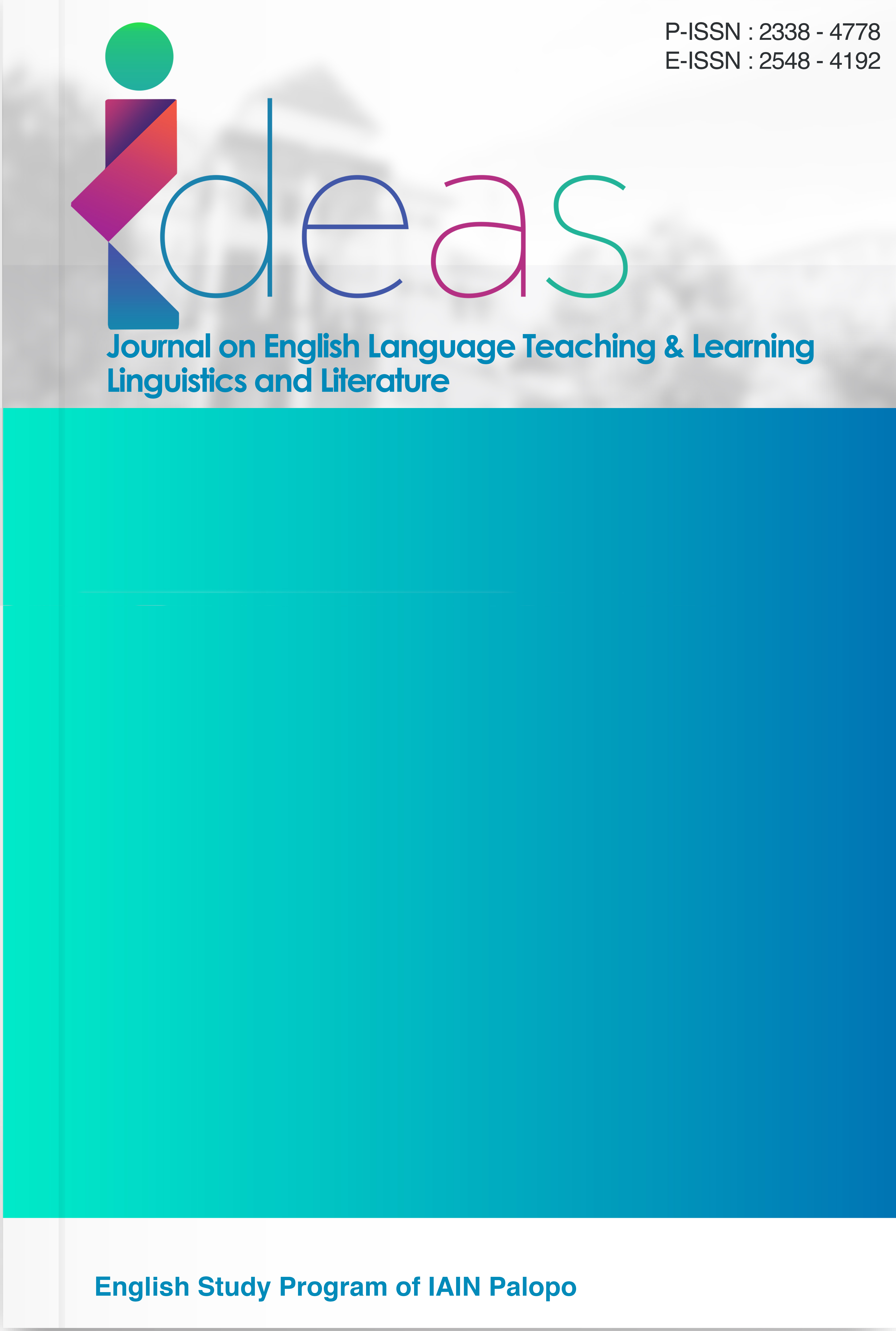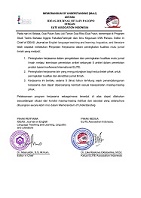An Analysis of Student Performance in Understanding and Responding to Short Functional Texts
DOI:
https://doi.org/10.24256/ideas.v13i2.7794Keywords:
short functional text, social expressions, conversation learningAbstract
This study investigates the ability of eighth-grade students at MTsN 3 Aceh Barat Daya to respond accurately to short functional texts containing common social expressions in English and to identify which categories are most and least effectively mastered. Five communicative functions were examined: expressing gratitude, apologizing, giving compliments, offering help, and greeting. Using a quantitative descriptive design, data were collected from 42 students through a 20-item dialogue-based multiple-choice test. Descriptive statistical analysis was employed to determine the mean, accuracy percentage, standard deviation, and score distribution per category. The results revealed that students achieved an average accuracy of 82.5% (median = 18.5/20), indicating generally good ability, though performance varied considerably. The highest proficiency was observed in giving and responding to compliments (95% accuracy), while acknowledging mistakes showed the lowest performance (79% accuracy), possibly due to cultural norms and limited exposure to authentic usage. Variation in scores was also linked to vocabulary range, interaction experience, and confidence. These findings suggest that English instruction should incorporate culturally sensitive categories, especially those less familiar to students, through authentic conversation, role-play, and interactive technology, with differentiated support for lower-performing learners.
References
Aswad, M. H., & Muin, F. R. (2022). Creative, Innovative, and Effective Teacher Training in Islamic Boarding School. IDEAS: Journal on English Language Teaching and Learning, Linguistics and Literature, 10(1), 1001-1016.
Brown, H. D. (2014). Principles of language learning and teaching (6th ed.). Pearson Education.
Goh, C. C. M., & Burns, A. (2012). Teaching speaking: A holistic approach. New York: Cambridge University Press.
Husnaini, H., Iksan, M., & Wiwin, W. (2023). Students’ Anxiety in Learning English Writing Skills at the Senior High School Level. FOSTER: Journal of English Language Teaching, 4(2), 93-110.
Ishihara, N., & Cohen, A. D. (2010). Teaching and learning pragmatics: Where language and culture meet. Pearson Education.
Kasper, G., & Rose, K. R. (2002). Pragmatic development in a second language. Blackwell.
Li, Z., & Hegelheimer, V. (2013). Mobile-Assisted Grammar Exercises: Effects on Self-Editing in L2 Writing. Language Learning & Technology, 17(3), 135–156.
Masruddin, M., & Nasriandi, N. (2022). Lexical and Syntactical Errors Performed by Junior High School Students in Writing Descriptive Text. IDEAS: Journal on English Language Teaching and Learning, Linguistics and Literature, 10(1), 1094-1100.
Muin, F. R., Husain, W., & Hardiyanti, S. (2023). The Role of Family Interpersonal Communication in Preserving Local Languages. IDEAS: Journal on English Language Teaching and Learning, Linguistics and Literature, 11(1), 69-76.
Madehang, M., Masruddin, M., & Iksan, M. (2024). Reflecting on the Implementation of Online English Learning in Islamic Higher Education: Lecturers’ and Students’ Perspectives. International Journal of Asian Education, 5(3), 183-197.
Nunan, D. (2004). Task-based language teaching. Cambridge University Press.
Richards, J. C. (2008). Teaching listening & speaking: from theory to practice. Cambridge University Press.
Stockwell, G. (2010). Using mobile phones for vocabulary activities: Examining the effect of the platform. Language Learning & Technology, 14(2), 95–110.
Taguchi, N. (2011). Teaching pragmatics: Trends and issues. Annual Review of Applied Linguistics, 31, 289–310.
Tomlinson, C. A. (2014). The differentiated classroom: Responding to the needs of all learners. Ascd.
Woodrow, L. J. (2006). Anxiety and Speaking English as a Second Language. Regional Language Centre Journal, 37(3), 308-328.
Downloads
Published
Issue
Section
Citation Check
License
Copyright (c) 2025 Lukman B, Sukri Adani

This work is licensed under a Creative Commons Attribution-ShareAlike 4.0 International License.
Authors retain copyright and grant the journal right of first publication with the work simultaneously licensed under an Attribution-ShareAlike 4.0 International (CC BY-SA 4.0) that allows others to share the work with an acknowledgement of the work's authorship and initial publication in this journal.
Authors are able to enter into separate, additional contractual arrangements for the non-exclusive distribution of the journal's published version of the work (e.g., post it to an institutional repository or publish it in a book), with an acknowledgement of its initial publication in this journal.
Authors are permitted and encouraged to post their work online (e.g., in institutional repositories or on their website) prior to and during the submission process, as it can lead to productive exchanges, as well as earlier and greater citation of published work (See the Effect of Open Access)




